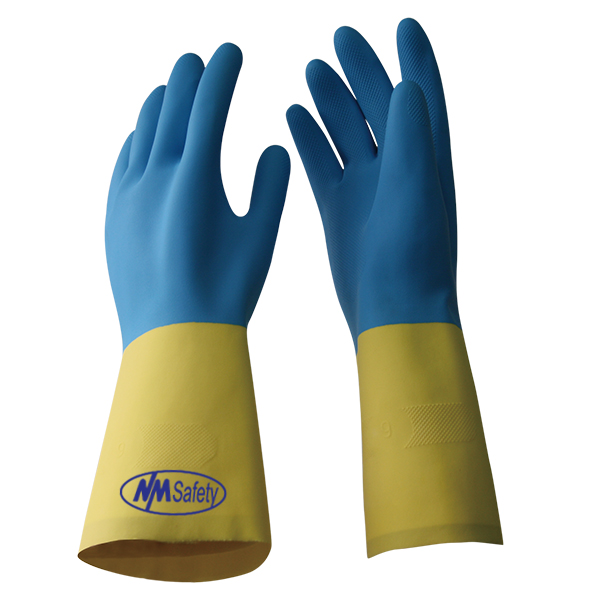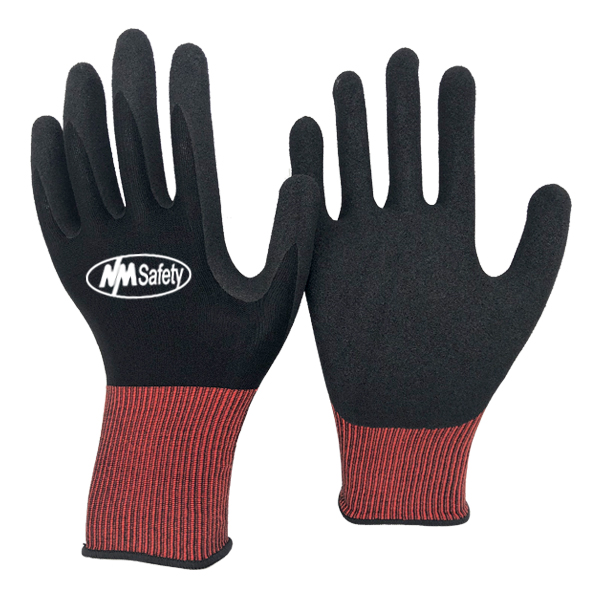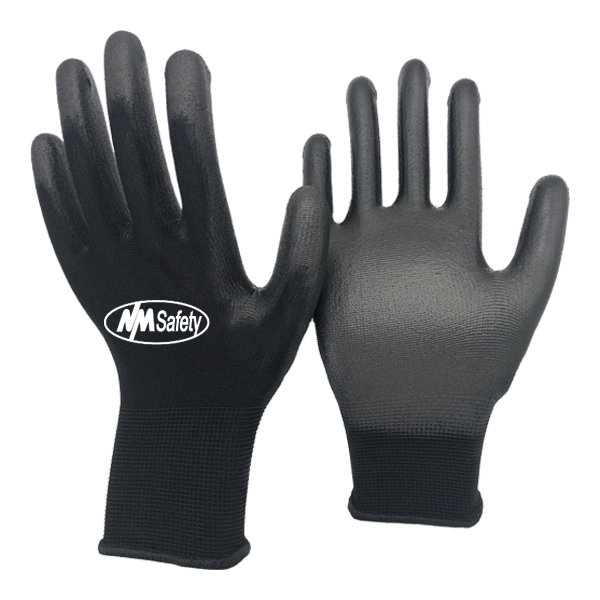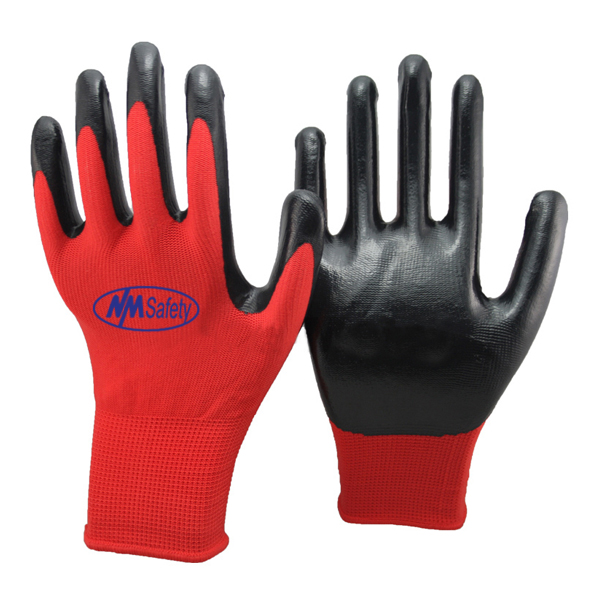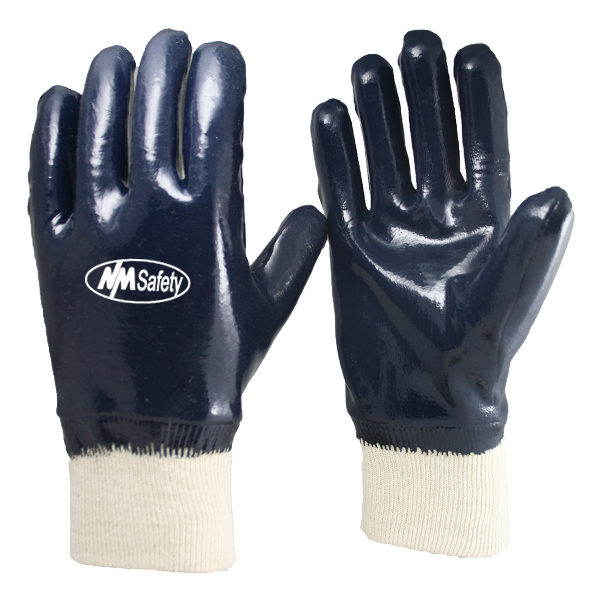What are Neoprene Gloves? Personal protection equipment (PPE) such as neoprene gloves is necessary for various tasks. They provide us with the essential protection and dexterity to do our work as quickly as possible. When made into gloves, neoprene is a synthetic rubber material that provides waterproof protection against a number of liquids and chemicals. Neoprene's exceptional waterproofing makes the material ideal for diving gloves, wetsuits, culinary gloves, and other similar applications. So, if you're still unsure about "what are neoprene gloves?" and whether or not you should get a pair to support your existing responsibilities, keep reading to find out!
Gloves made of neoprene: To describe neoprene gloves, we must first define the substance that is used to create these useful pairs. In reality, these gloves are made of polychloroprene, which is a synthetic rubber. One of the elastomers is a neoprene glove, which allows for stretching without harming the shape. Polybutadiene rubber gloves, silicone gloves, and Polyisobutylene gloves are examples of popular synthetic rubber gloves. The polymerization method, which involves many chemical reactions, is used to make neoprene gloves. The pair has exceptional pliability and protecting qualities as a result of this essential manufacturing procedure.
What Are Neoprene Gloves Used For?
Chemical resistance: Workers who work with acids or caustics can rely on chemical-resistant gloves like neoprene gloves to keep their hands safe. Oils, fats, greases, and petroleum compounds are all well-resistible in these gloves.
Abrasion and cut resistance: Neoprene gloves are abrasion and cut resistant, which can assist avoid cuts and punctures when working with sharp edges and hard instruments. This characteristic also ensures that the device will live for a long time, even if it is put to a lot of use.
Heat and weather resistance: This product can withstand high temperatures to a degree. Even though this function isn't particularly spectacular, we may use them without fear of the gloves degrading owing to exposure to UV rays and inclement weather.
Impact-resistant: Neoprene gloves have a high density and incredible tensile strength. As a result, they can shield us from little hits.
Neoprene gloves have many benefits: As earlier said, these neoprene gloves can protect our skin from a variety of threats. Their benefits, however, are not limited to their defensive qualities; they also assist us in better managing our job with characteristics such as
Flexibility: Neoprene gloves are popular among workers because of their extreme pliability. They enable us to have finger sensitivity and movement mobility. As a result, these gloves will help with dexterity-intensive activities.
Form-fitting: We can have a nice fit when using neoprene gloves because they embrace our hands without leaving much space between our fingers and the cloth. They also can revert to their previous shape after being stretched, thus deformation is not an issue. Neoprene is extremely stretch resistant, providing for a snug fit that rivals latex and nitrile alternatives. This implies that while wearing the glove, you'll be able to feel whatever you're doing without feeling restricted. You'll have nearly the same dexterity wearing these gloves as you would without them.
Durable: Because neoprene gloves are known for their high density and textile strength, we can trust the pair to handle hefty tasks. Furthermore, it is resistant to oxidation and aging, ensuring long-term use.
How Do Nitrile and Neoprene Gloves Differ? Both nitrile and neoprene gloves share some of the characteristics of rubber gloves, such as resistance to water, chemicals, and abrasion. However, they differ in terms of qualities and application:
While neoprene gloves protect us from some caustics and acids, nitrile gloves are resistant to oils, solvents, petroleum-based agents, gas, and other substances.
Nitrile gloves can protect us from the water by protecting our hands from corrosion caused by water. Neoprene gloves, on the other hand, can be both waterproof and weatherproof. Wearing neoprene gloves can protect us from UV rays, freons, and extreme weather conditions.
In comparison to nitrile pairs, neoprene gloves have greater flexibility. The former is more flexible and durable, allowing for greater dexterity. Some employees use thin neoprene disposable gloves to get the most out of this feature.
Are all Neoprene gloves resistant to chemicals? Nitrile gloves come in a variety of qualities. Different amounts of chloroprene are used in their production. In their manufacturing procedures, different manufacturers employ varying amounts. Chemical resistance is proportional to the amount of chloroprene utilized. Chemical resistant glove, has low chemical resistance to acetaldehyde but high resistance to amyle acetate.
Is it Possible to Puncture Neoprene Gloves? Neoprene gloves are resistant to punctures. Cuts, punctures, gouges, and slashes can all be avoided with these. They feature a strong surface that resists tearing and cutting caused by sharp edges.
Who would've thought that a set of Neoprene gloves could mean the difference between life and death? Chemical-resistant gloves could either make your life easier and more comfortable, or they can completely save your life. Your profession may expose you to a variety of risks ranging from uncomfortable to lethal, no matter how spectacular it appears. Gloves, while not the first item that comes to mind when considering safety gear, help to protect one of the most important instruments that individuals have: their hands.
Chemical resistant gloves: Natural, butyl, neoprene, nitrile, and fluorocarbon (Viton) rubbers, as well as polyvinyl chloride (PVC), polyvinyl alcohol, and polyethylene, are used to make chemical resistant gloves. For improved performance, these materials can be blended or laminated. As a rule of thumb, the better the chemical resistance, the thicker the glove material, however, thick gloves may hinder grip and safety. The lack of dexterity harms safety. Chemical-resistant gloves include the following:
- Neoprene gloves
- Natural (latex) rubber gloves
- Utyl gloves
- Nitrile gloves
Conclusion: NMSafety not only answer the question "What are neoprene gloves?" However, it also gives detailed information and comparisons between different types of chemical resistant gloves. Hopefully, this information will help you discover the best neoprene pairs for your profession while also ensuring your safety.




